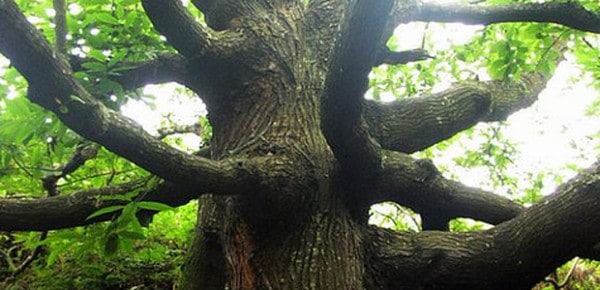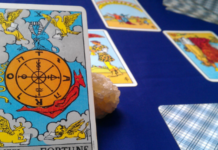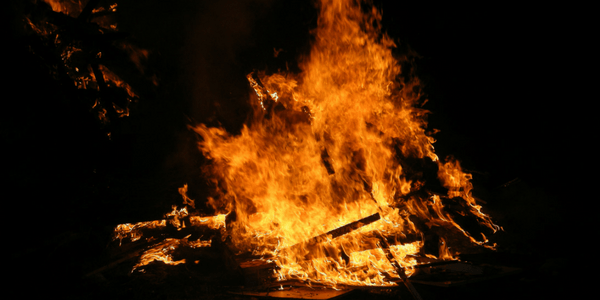 For many people, their first introduction to the Song of Amergin came through Robert Graves’ The White Goddess. Graves states that, “English poetic education should, really, begin not with Canterbury Tales, not with the Odyssey, not even with Genesis, but with the Song of Amergin.”
For many people, their first introduction to the Song of Amergin came through Robert Graves’ The White Goddess. Graves states that, “English poetic education should, really, begin not with Canterbury Tales, not with the Odyssey, not even with Genesis, but with the Song of Amergin.”
However, despite this apparently reverential beginning; Graves does not actually put forward the Song of Amergin as we have it; rather he begins by utterly changing this ancient poem to better fit his own pet theory, connecting the lines from this poem to the Ogham alphabet and the “months” of the year. This creates a vague pattern, unprecedented in either nature or the Gaelic source culture he purports to respect.
Graves provides neither the original Irish poem, nor anyone else’s English translation. Instead he just sets off on his own imaginative journey.
In order to create proof for his notions, he translates the lines of the Song very loosely, which, given the dense and obscure nature of the poem, is completely acceptable. However, he then proceeds to rearrange the lines, with no consideration of what they might mean in their original order, and invents completely new lines to give it the flow and meaning Graves wants this poem to have. The result is a perfectly lovely poem, but it has no real connection to Celtic tradition, myth, or cosmology, save through the mind of Robert Graves.
Grave’s Song does not even begin with “I am Wind of Sea;” so the primordial significance of this line and it’s connection to the last line of poem (which was dropped entirely) reveals his unfamiliarity with the tradition he is pretending to illuminate while pursuing his unique vision. Instead the poem proceeds like this:
I am a stag: of seven tines,
I am a flood: across a plain,
I am a wind: on a deep lake,
I am a tear: the Sun lets fall,
I am a hawk: above the cliff,
I am a thorn: beneath the nail,
I am a wonder: among flowers,
I am a wizard: who but I
Sets the cool head aflame with smoke?
I am a spear: that roars for blood,
I am a salmon: in a pool,
I am a lure: from paradise,
I am a hill: where poets walk,
I am a boar: ruthless and red,
I am a breaker: threatening doom,
I am a tide: that drags to death,
I am an infant: who but I
Peeps from the unhewn dolmen, arch?
I am the womb: of every holt,
I am the blaze: on every hill,
I am the queen: of every hive,
I am the shield: for every head,
I am the tomb: of every hope.
It’s really is lovely, but bears only a vague and passing resemblance to the original, which he pretends to respect so much.
Having rewritten and rearranged the lines of the Song of Amergin; Graves, likewise, rearranges the letter of the Ogham alphabet and even drops a couple of consonants as “late additions.” This reduces the basic letters of the Ogham from 15 consonants and 5 vowels, to just 13 consonants and 5 vowels. He does this so that he can connect each consonant to one “lunar month” and so, since each Ogham letter is associate with (among many other things) a tree, the “Celtic Tree Calendar” is born.
This is an invention unprecedented in the original lore. However, Graves’ Celtic Tree Calendar spread like wildfire through a growing neo-pagan movement hungry for meaning and short on facts about Celtic calendar folklore.
Graves’ suggestion is this:
| Name Beth Luis Nion Fearn Saille Uath Duir Tinne Coll Muin Gort Ngetal Ruis Extra day | Equivalent Dates Dec 24 – Jan 20 Jan 21 – Feb 17 Feb 18 – Mar 17 Mar 18 – Apr 14 Apr 15 – May 12 May 13 – Jun 9 Jun 10 – Jul 7 Jul 8 – Aug 4 Aug 5 – Sep 1 Sep 2 – Sep 29 Sep 30 – Oct 27 Oct 28 – Nov 24 Nov 25 – Dec 22 Dec 23 | Tree Birch Rowan Ash Alder Willow Hawthorn Oak Holly Hazel Vine Ivy Reed Elder — |
The result is a calendar that bears no resemblance to any traditional Celtic time keeping system we have on record and ignores culturally relevant holy days, like Samhain, Imbolc, Bealtaine, and Lughnasadh. Graves’ newly invented calendar is less poetic, less accurate, and over all less interesting than what the ancients have left us; which he connected to his own rearranged Ogham and his reinvented Song of Amergin. The fervor with which it spread in the ’60s and ’70s is rooted only it’s availability and not in its connection to either ancient tradition or the self evident rhythms of natural world – and 50 years later we are still living with the fall out.
Beyond misrepresenting Celtic religion and culture, Graves imaginary tree calendar also misrepresents nature itself. It creates a system of 28 day months (which is the time it takes for the moon to go around the zodiac), but is not the 29.5 day cycle of new moon to new moon. This difference is due the fact that the Earth is also in motion and resulting in the full moon appearing in a different sign each month. Many traditional time keeping systems, including the Celtic Coligny calendar, take into account by some pattern of alternating “full” (30 day) and “hollow” (29 day) months, and then adding the occasional inter-calendary month to keep the lunations aligned with the solar year. Various other Indo-European calendars including the Athenian calendar and several from India also follow similar patterns. In contrast to these ancient systems, Graves’ calendar is one or two days short each month and quickly falls out of alignment with the phases of the moon.
While I can appreciate that Graves felt that poetic inspiration, or “analepsis” (as he termed it) was a valid historical methodology, he was clearly not very good at it given how his results vary from so deeply from the cultural and natural realities he was seeking to poetically capture.
Robert Graves bemoaned the fact that his work was “loudly ignored” by most Celtic scholars,1 but that should perhaps be considered a kindness, given that when scholars did look at his work he was sited for things like having “misled many innocent readers with his eloquent but deceptive statements about a nebulous goddess in early Celtic literature” among other things.2
Personally, I’d like to see Robert Graves’ fantasies laid to rest, that they might stop obscuring the memory those who came before us, so that the fanciful thought of one person might stop polluting popular perception of the past and popular perceptions of the natural patterns evident in the living world around us.
This first appeared on Brian Walsh’s blog Song of Amergin, as “Desecrating Graves (Introduction to the Song of Amergin, part II)” on 24 September 2012. Click here for part I, and to read more from Song of Amergin. Reprinted with permission.
Image credit: Romain Vallet
- White, Donna R. A Century of Welsh Myth in Children’s Literature. p. 75. [↩]
- Davidson, Hilda Ellis (1998). Roles of the Northern Goddess, page 11. [↩]








